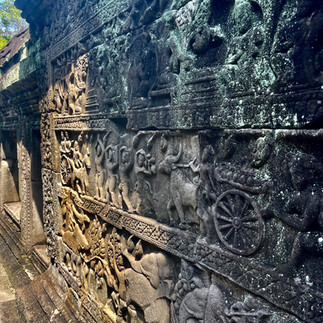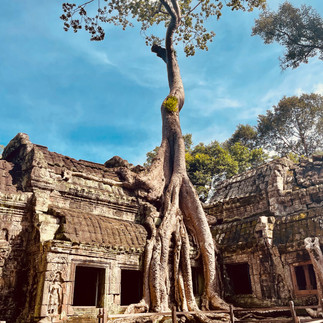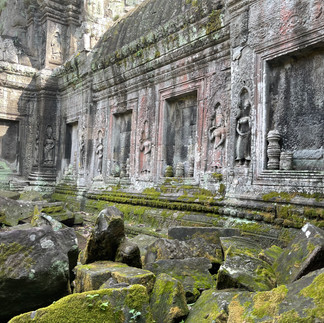After a challenging week of work in Phnom Penh, I managed to orchestrate an escape from Cambodia’s bustling metropolis to the more relaxed atmosphere of Siem Reap. Eight kilometres from the city, deep in the heart of the Cambodian jungle, the monumental silhouette of Angkor Wat stands as a sentinel to a once-glorious empire and a testament to human ambition. Erected during the reign of King Suryavarman II in the 12th century, the architectural marvel was the zenith of the Khmer Empire’s prowess.
As legend has it, the city of Angkor, of which Angkor Wat is the crowning jewel, was conceived in a dream. The king envisioned a Hindu temple city that mirrored the might of the gods, a structure so colossal that it would dwarf even the mountain abodes of the deities. It took legions of labourers, architects, and artisans over three decades to create this masterpiece. Facing untold challenges, from dense jungles to the oppressive tropical heat, the Khmer etched the legacy of a king and his empire in stone. Evidence suggests that by the end of the 12th century, the temple complex had transitioned to Buddhism, creating an eye-watering collision of the two religions in bas-relief on an unimaginable scale.
Angkor Wat, believed to represent Mount Meru, the home of the gods in Hindu mythology, is an adventurer’s labyrinth with myriad corridors, compartments, and soaring towers. Walking through the remains, I easily envisaged hidden chambers laden with treasures and guarded by traps for any unsuspecting treasure hunter. The intricate bas-reliefs chronicle legendary battles, both historical and mythological. I wandered for hours with my guide providing a lyrical soundtrack to my explorations. Although I suspect that not all of the narrative was historically accurate, the colourful enthusiasm of the delivery was priceless.
Even after the fall of the Khmer Empire, when nature reclaimed Angkor, intrepid explorers were lured by tales of a lost city in the jungle. ‘Lost’ appears more romantic European affectation than fact. The complex might have fallen into disuse, but I suspect the local indigenous peoples were tripping over it for centuries long before Henri Mouhot, a French naturalist, ‘rediscovered’ it in the 19th century. His tales of encountering the grandeur of Angkor Wat amidst the jungle ignited a new era of adventurers eager to uncover its historical treasures and, even back then, a ‘lost city’ made for excellent marketing. Here’s a quote from old Henri.
One of these temples, a rival to that of Solomon, and erected by some ancient Michelangelo, might take an honourable place beside our most beautiful buildings. It is grander than anything left to us by Greece or Rome, and presents a sad contrast to the state of barbarism in which the nation is now plunged.
Today, though the jungle has receded under the toil of landscapers and archeologists, the tour busses abound, and many of Angkor Wat’s mysteries lie revealed, the ancient temple has lost none of its awe-inspiring appeal. For those more adventurous amongst us (like me), there are many hidden temples and structures secreted within the jungle canopy beyond the reach of the tourist hoard. A quiet word in the ear of the right guide, and a few dollars to compensate for the extra effort, will reward an intrepid traveller with unique experiences reminiscent of Indiana Jones. But don’t think for a minute that the popularity of this incredible site makes the journey to Angkor any less a bucket list event.
























Comments